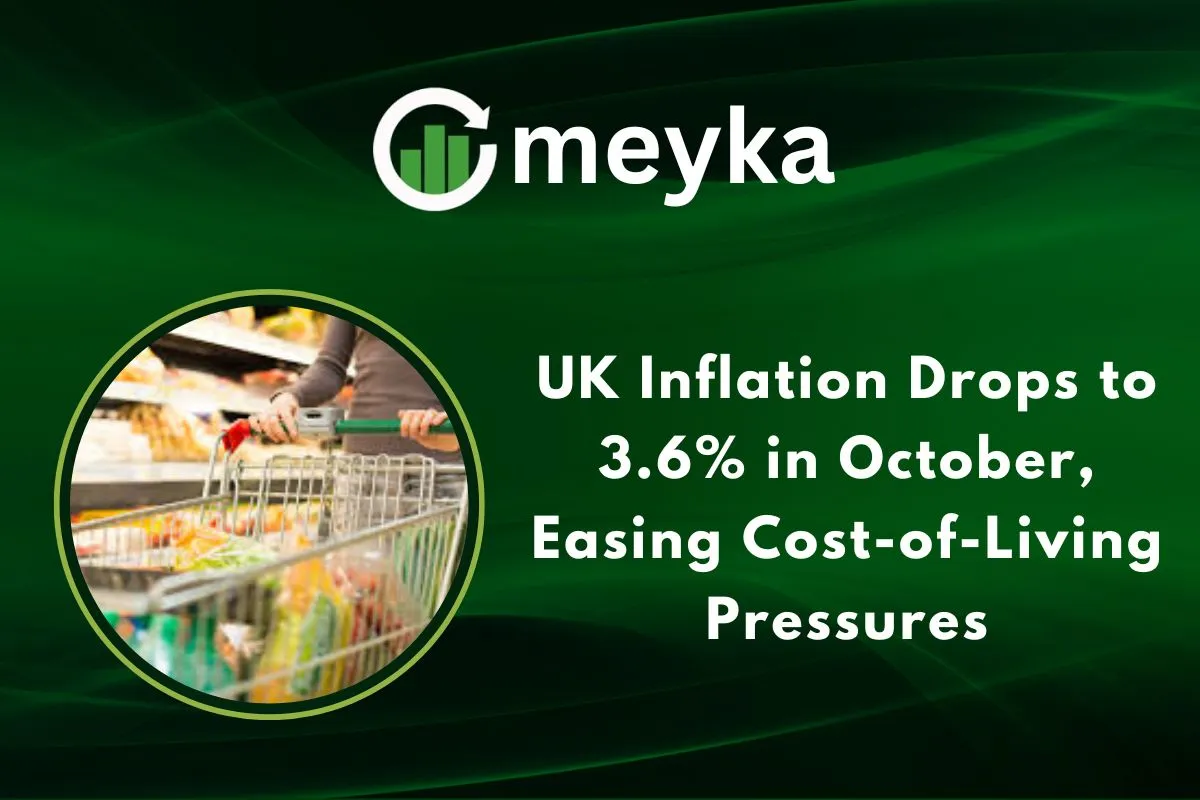UK Inflation Drops to 3.6% in October, Easing Cost-of-Living Pressures
In October 2025, UK inflation fell to 3.6%, down from 3.8% in September. For families across Britain, that drop offers some much needed relief after months of rising prices. We’ve seen groceries cost more, energy bills jump, and everyday spending tighten. This shift matters because it signals that the pressure on our wallets may be easing, just a little. It also matters for businesses, wages and borrowing costs. We will explain what the drop means, how it happened, who it helps, what it means for business and policy, and how the UK fits into the global picture.
Understanding the Inflation Drop
First, what is inflation? In simple terms, inflation measures how much the price of goods and services rises over time. The main official measure in the UK is the Office for National Statistics’s (ONS) Consumer Price Index (CPI). In October 2025, CPI rose by 3.6% over the past year. That’s lower than 3.8% in September and the first drop after five straight months of increases. Which areas helped pull inflation down? The biggest contributions to the easing came from housing and household services: gas rises slowed dramatically (from +13.0% in September to +2.1% in October), and electricity price increases dropped too. Also, hotel prices fell in October, which helped lower inflation. On the flip side, food and non‑alcoholic beverage inflation rose a little: 4.9% in October versus 4.5% in September.
So in short: the drop to 3.6% is real, driven mostly by slower energy/housing cost growth and some easing in services costs.
Impact on Households
For households, this is welcome news. When inflation is high, every pound we spend buys less than before. With the rate coming down, we face a little less squeeze. For example: energy bills are rising much more slowly than before, which helps households manage their budget. The ONS says gas prices year‑on‑year rose only +2.1% in October compared to +13.0% in September. If you are on a fixed income, or paying rent, this matters. On food: although food inflation is still high (4.9%), the fact that other costs are stabilising means that the overall burden is slightly lighter. With inflation at 3.6% instead of higher, our real incomes (what our wages buy) stop eroding as fast. But this isn’t a return to “cheap prices.” We are still above the UK government’s long‑term target of 2%. The cost‑of‑living crisis is still with us. Many households will still feel stretched, especially lower income ones, where any price rise hits harder.
Thus, while the 3.6% figure is a step in the right direction, it doesn’t mean the pressure is gone.
Implications for Businesses
Businesses also benefit from lower inflation. When inflation slows, input costs (raw materials, energy, labour) tend to rise less rapidly. That can ease pressure on profit margins or allow businesses to hold prices steady. For consumer‑facing firms (retailers, hospitality), lower inflation can boost spending. If households feel less squeezed, they may be more willing to spend. That could help revive sectors that have been under strain. For employers, it may ease wage cost pressures, though wage growth is still strong in many parts of the UK. If companies can anticipate slower cost rises, they may have more confidence in planning investment, hiring and pricing.
However: businesses must stay alert. Slower inflation doesn’t mean costs won’t rise. And businesses operating internationally still face global price pressures, supply‑chain issues and wage inflation which may outpace domestic inflation.
Monetary Policy and Bank of England Response
The Bank of England (BoE) has a primary target to keep inflation at 2%. When inflation is well above target, the BoE tends to raise interest rates to cool demand and price pressures. With inflation dropping to 3.6%, the case for a future interest‑rate cut becomes stronger. Indeed, reports suggest that the BoE could consider a cut as early as December if the trend continues.
That is good news for borrowers: lower rates mean a chance of cheaper mortgages, loans and credit. But the BoE remains cautious because inflation is still well above target and wage growth remains high, which could push inflation up again. We should also note government policy: the Chancellor has said the upcoming Budget will aim to reduce the cost of living without adding to inflation.
In short: the drop in inflation gives the BoE more flexibility, but they won’t act hastily because upside risks remain.
Global and Economic Context
How does the UK’s performance compare globally? The UK’s 3.6% is still higher than many other major advanced economies. For example, Germany’s inflation rate in October was around 2.3% and France’s about 0.9%. Global factors matter: energy prices, shipping and supply‑chain disruptions, and geopolitical risks all feed into UK inflation. For example, the slower rise in UK energy prices reflects a shift in the global energy market plus domestic regulatory changes (via the energy price cap). The UK is not isolated. Inflation trends elsewhere influence import prices, competitiveness and monetary policy decisions. If global inflation stays elevated, the UK could face imported inflation again, which would complicate efforts to bring inflation down further.
Overall: the UK is seeing improvement, but it remains part of a global system where risks and forces are interconnected.
Conclusion
The drop of UK inflation to 3.6% in October is a positive signal. It brings some relief to households, eases pressure on businesses, and gives the Bank of England more room to manoeuvre. But it isn’t a full return to ‘normal’. We’re still above the target of 2%, food price rises remain, and global forces continue to loom. As we move forward, we need to keep a close eye on how energy prices, wages and global supply chains behave. For now, though, we can welcome the fact that the cost‑of‑living squeeze may be easing a little.
FAQS
The annual inflation rate in the UK was 3.6% in October 2025.
Yes, inflation has decreased from 3.8% in September to 3.6% in October, marking a drop.
The cost‑of‐living inflation rate, as measured by consumer prices (CPI) in UK, stood at 3.6% in October 2025.
Disclaimer:
The content shared by Meyka AI PTY LTD is solely for research and informational purposes. Meyka is not a financial advisory service, and the information provided should not be considered investment or trading advice.






